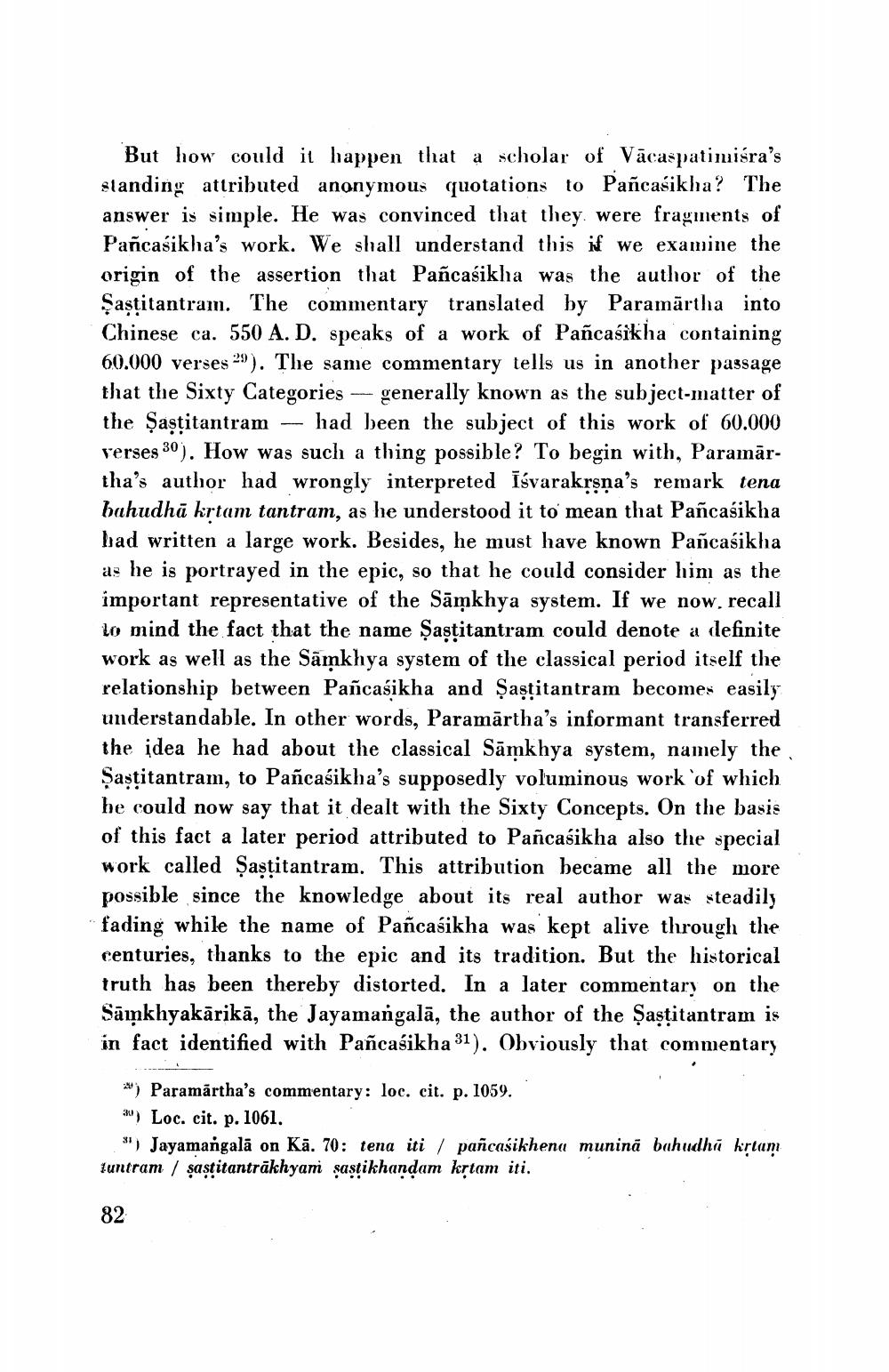________________
But how could it happen that a scholar of Vacaspatimiśra's standing attributed anonymous quotations to Pañcasikha? The answer is simple. He was convinced that they were fragments of Pancasikha's work. We shall understand this if we examine the origin of the assertion that Pañcaśikha was the author of the Şaştitantram. The commentary translated by Paramartha into Chinese ca. 550 A. D. speaks of a work of Pañcasikha containing 60.000 verses 29). The same commentary tells us in another passage that the Sixty Categories - generally known as the subject-matter of the Şastitantram had been the subject of this work of 60.000 verses 30). How was such a thing possible? To begin with, Paramartha's author had wrongly interpreted Iśvarakṛṣṇa's remark tena bahudhā kṛtam tantram, as he understood it to mean that Pañcasikha had written a large work. Besides, he must have known Pañcaśikha as he is portrayed in the epic, so that he could consider him as the important representative of the Samkhya system. If we now, recall to mind the fact that the name Saṣṭitantram could denote a definite work as well as the Samkhya system of the classical period itself the relationship between Pañcasikha and Sastitantram becomes easily understandable. In other words, Paramartha's informant transferred the idea he had about the classical Samkhya system, namely the Şaştitantram, to Pañcasikha's supposedly voluminous work of which he could now say that it dealt with the Sixty Concepts. On the basis of this fact a later period attributed to Pañcaśikha also the special work called Şaṣṭitantram. This attribution became all the more possible since the knowledge about its real author was steadily fading while the name of Pañcaśikha was kept alive through the centuries, thanks to the epic and its tradition. But the historical truth has been thereby distorted. In a later commentary on the Samkhyakārikā, the Jayamangala, the author of the Sastitantram is in fact identified with Pañcaśikha 31). Obviously that commentary
2) Paramartha's commentary: loc. cit. p. 1059.
3) Loc. cit. p. 1061.
"Jayamangala on Kā. 70: tena iti / pañcaśikhena muninā bahudhā kṛtam luntram/sastitantrākhyam ṣastikhandam kṛtam iti.
82




